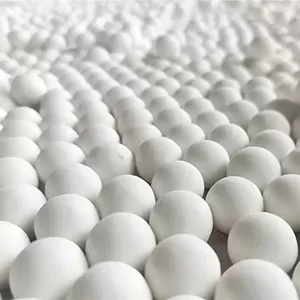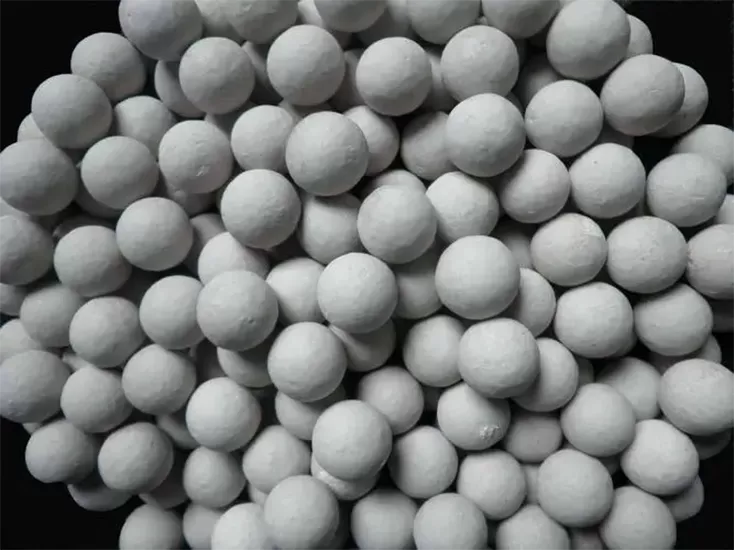Ceramic ball packing is widely used in industrial processes such as chemical engineering, petroleum refining, and water treatment, functioning as support, filtration, and heat transfer media due to its high temperature resistance, corrosion resistance, and structural stability. Its diverse applications stem from the unique combination of mechanical strength and chemical inertness, making it a versatile component in various industrial systems.

In chemical processing, ceramic ball packing serves as a support medium in packed columns. It provides a stable base for catalyst beds, preventing catalyst particles from settling and ensuring uniform fluid distribution. This is crucial in processes like distillation and absorption, where efficient contact between fluids and catalysts is essential for reaction efficiency. The high porosity of certain ceramic ball packing designs enhances mass transfer, allowing for better interaction between gas and liquid phases, thus improving the overall productivity of chemical reactions.
Petroleum refining relies heavily on ceramic ball packing for its ability to withstand high temperatures and corrosive environments. In crude oil distillation towers, ceramic balls act as insulation and support materials, separating different sections of the tower and maintaining optimal temperature gradients. Their resistance to hydrocarbons and acidic by-products ensures long-term performance, reducing maintenance downtime. Additionally, in desulfurization units, ceramic ball packing helps in distributing reactants evenly across catalyst beds, enhancing the removal of sulfur compounds from petroleum products.

Water treatment facilities utilize ceramic ball packing for filtration and purification purposes. The porous structure of these balls traps suspended solids, sediments, and contaminants as water flows through them, improving water clarity and quality. In wastewater treatment, they also support biological filtration processes, providing a surface for beneficial microorganisms to attach and break down organic pollutants. Ceramic ball packing is particularly valuable here due to its resistance to chemical cleaning agents, ensuring it remains effective even after repeated sanitization.
In thermal processing systems, such as heat exchangers and furnaces, ceramic ball packing facilitates efficient heat transfer. Their high thermal conductivity allows for uniform heat distribution, reducing energy consumption and improving process efficiency. In high-temperature furnaces, they act as heat insulators, minimizing heat loss and maintaining stable internal temperatures, which is critical for processes like metal annealing and ceramic sintering.
Environmental protection applications also benefit from ceramic ball packing. In air pollution control systems, they are used in scrubbers to remove harmful gases such as sulfur dioxide and nitrogen oxides. The large surface area of the packing promotes contact between the gas stream and cleaning solutions, enabling effective absorption of pollutants. Their durability ensures consistent performance in harsh conditions, contributing to reduced emissions and compliance with environmental regulations.
Moreover, in the pharmaceutical and food processing industries, ceramic ball packing is employed for its inert nature and easy sterilization. It is used in columns for liquid chromatography, where it provides a stable support for stationary phases, ensuring accurate separation of compounds. In food and beverage filtration, it helps remove impurities without affecting the taste or quality of the final product, meeting strict hygiene standards.
The selection of ceramic ball packing depends on specific application requirements, such as temperature, pressure, and chemical compatibility. Different sizes and porosities are chosen to optimize flow rates and contact efficiency. Regular inspection and replacement of worn packing ensure continued performance, making ceramic ball packing a reliable and cost-effective solution across various industrial sectors.



